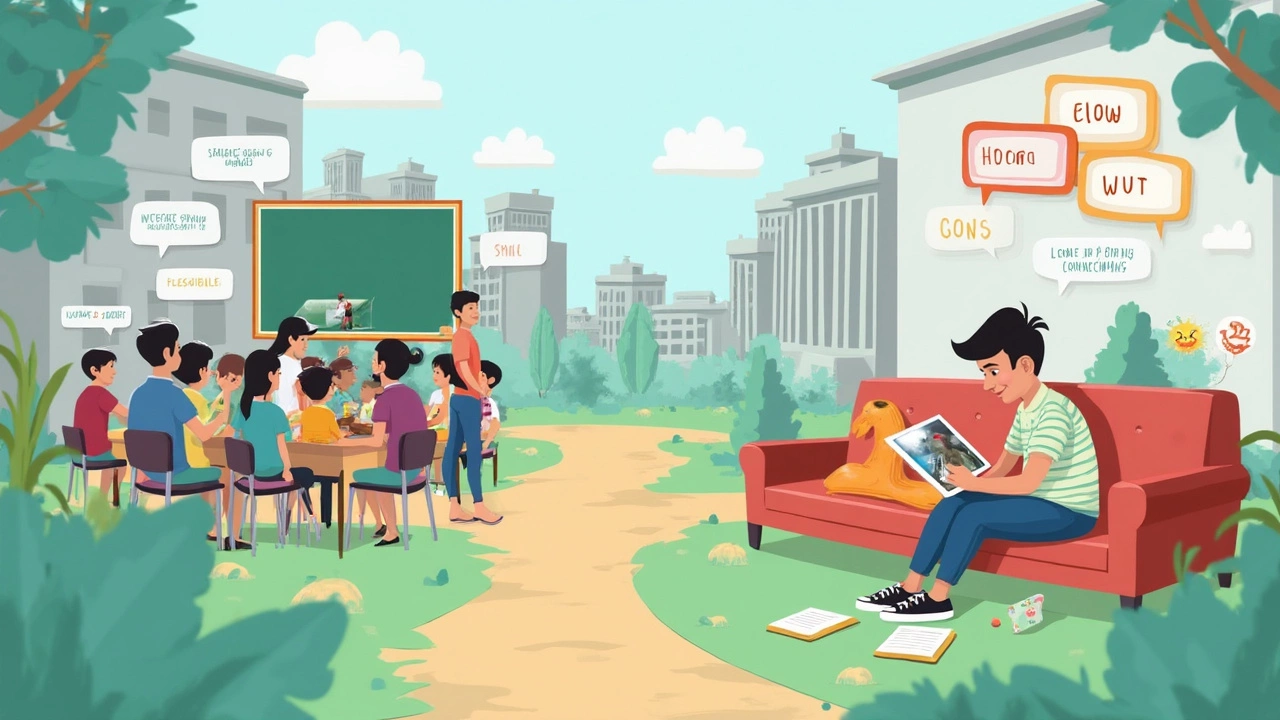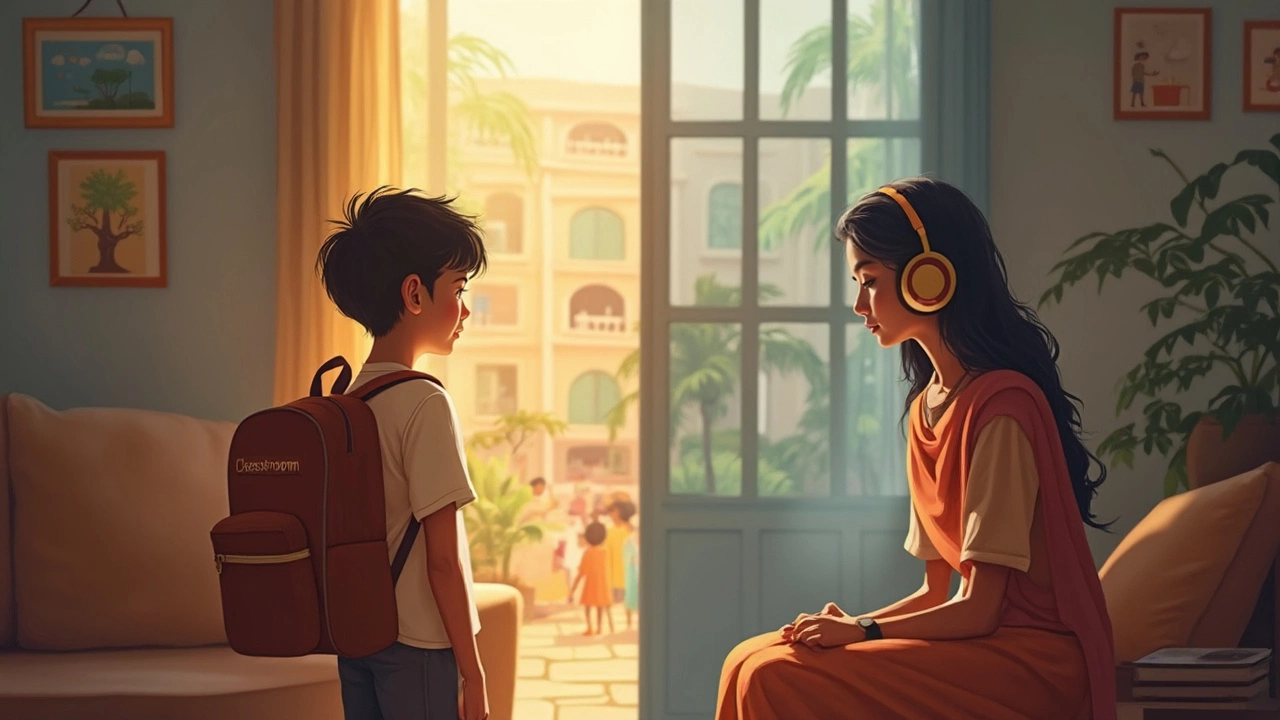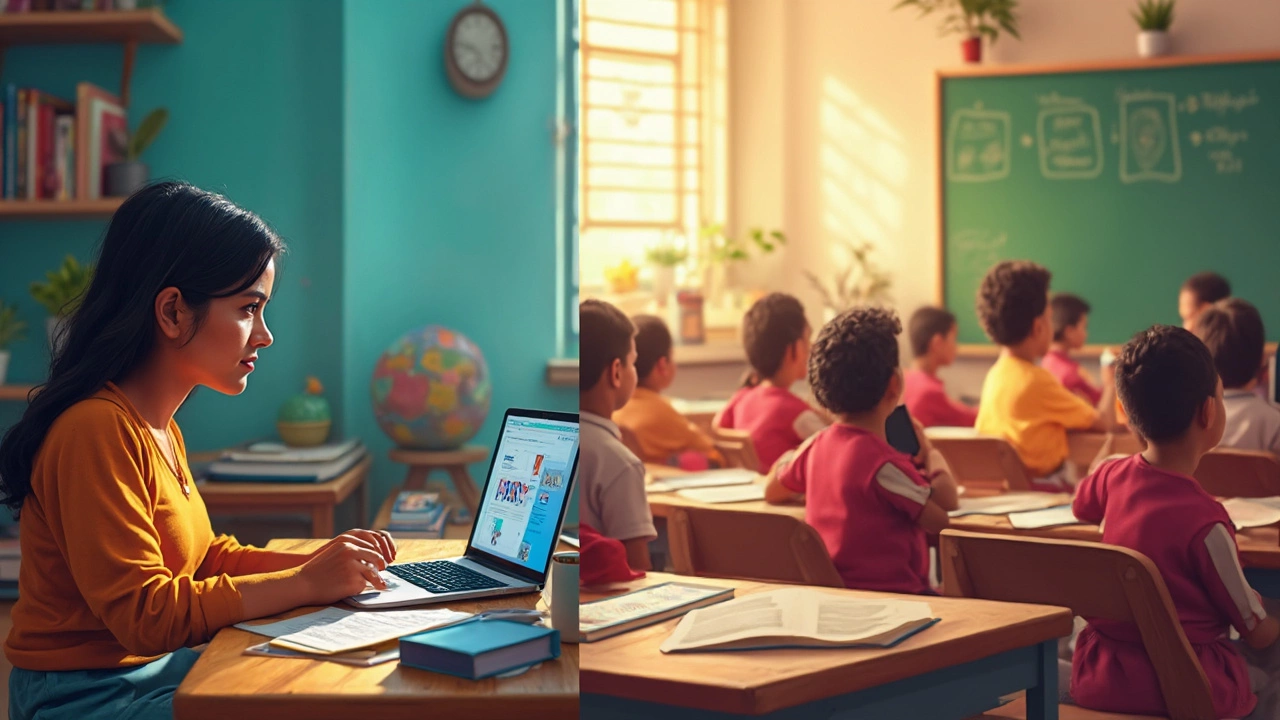Ever tried learning Algebra with a dog barking in the next room or your cat Luna dancing on your keyboard? Yeah, welcome to distance learning. But before you picture pajama classes as the dream, there’s the flip side – the humming energy of a real classroom, teachers actually looking at your scribbled notes, and the buzz of classmates all around.
So many folks are trying to figure out which is actually better: logging in from your couch, or walking into a classroom with classmates you can literally poke for help. Here’s the thing – it’s not that one is good and the other is bad. It really depends on your style, your daily life, and how you like to connect with people when you’re learning something tricky.
Trying to choose? Let’s cut through the hype. We’ll dig into how each setup actually works, what daily life looks like, and what you really get (or miss) from either side. There’s no single right answer, but after reading this, you’ll have a lot more clarity.
- What Does Distance Learning Look Like?
- Classroom Vibes: The Old-School Way
- Who Wins on Flexibility?
- Face-to-Face vs Screen Time: Social and Focus Factors
- Finding Your Best Fit
What Does Distance Learning Look Like?
Picture yourself grabbing coffee in your kitchen at 8:55 a.m. and clicking into class without ever worrying about missing the bus. That’s the daily grind for lots of students doing distance learning. In 2024, almost 60% of U.S. college students took at least one course online, and more high schoolers are following the trend every semester.
So, how does it actually work? Most distance learning goes one of two ways:
- Live classes (synchronous): You and your classmates log into a video call at the same time. You listen, watch your teacher, and maybe answer questions live. Sometimes it’s just like being in a real classroom, except you can mute yourself and eat snacks.
- Recorded or self-paced (asynchronous): You get the videos, readings, assignments, and quizzes. There’s a deadline, but you join in whenever you want—morning, night, or sandwiched between errands.
Most schools use platforms like Zoom, Google Classroom, and Canvas. Assignments, discussions, even group projects move online. You’ll probably email teachers more than you talk to them in real life, and group work happens in chat threads, documents, and video calls.
But it’s not just hit “play.” Schools have gotten way better at making distance learning interactive. Think polls, breakout rooms, discussion boards, and regular feedback. Some colleges even use VR for science labs now. Still, the big win is flexibility—you set your own study hours, no formal dress codes, and if you’re sick or traveling, you don’t miss as much.
If you’re considering it, here’s a tip: set aside a spot at home just for studying. Otherwise, you’ll find yourself half-watching lectures and half-scrolling Instagram (it happens, trust me). Another hack—a simple calendar or app for tracking due dates, because you’re suddenly in charge of keeping yourself on track.
Classroom Vibes: The Old-School Way
There’s something you just can’t copy about a real classroom. Picture this: walking into a room, seeing your friends grumble about last night’s homework, and a teacher ready to answer questions right on the spot. That energy gets a lot of people to focus, even if they wouldn’t admit it. In fact, a 2023 report from Harvard showed that students in face-to-face classrooms finish about 12% more work on time than those learning online. That’s not a small difference.
Classroom learning isn't just about books and lectures. It’s about hands-on experiments, group projects, field trips, and sometimes, sharing snacks under your desk while you swap stories. You get help as soon as you need it—whether it's a math problem or a science lab gone sideways. Plus, body language is huge. A confused look, a raised eyebrow, or even eye contact tells a teacher you’re lost, even if you don’t raise your hand.
Here’s what a typical day might look like:
- Live classes, often with set times and routines
- Instant feedback—raise your hand, ask a question, and get an answer
- Breakout sessions for small group work or debates
- Opportunities for teamwork, leadership, and making real friends
- Guidance counselors, sports, and after-school clubs right down the hall
Check out these quick stats comparing test scores and completion rates between in-person and distance learning environments:
| Setting | Average Test Score | Assignment Completion Rate |
|---|---|---|
| Classroom | 83% | 88% |
| Distance Learning | 78% | 76% |
One more thing to consider: distractions are way different in a classroom. Sure, your friend might try to pass you a silly note, but it's nothing compared to Luna walking across your laptop or your dog Max begging for a walk mid-class. With others focused around you, it’s easier to stay on track.
So if you’re the type of person who learns better with structure and real-time help, this old-school option can be a game changer. Classroom vibes bring routine and a sense of community you just can’t fake through a screen.

Who Wins on Flexibility?
If you’re trying to juggle a job, family, or just life in general, distance learning usually comes out on top for flexibility. Picture this: you can watch lessons at midnight when things are quiet, or knock out coursework on a Sunday afternoon. The National Center for Education Statistics shared that about 65% of online learners in 2024 picked it mainly for the power to work classes around their schedule, not the other way around.
Here’s a quick side-by-side of what makes each setup tick when it comes to flexibility:
| Factor | Distance Learning | Classroom |
|---|---|---|
| When you learn | Often any time, any day | Fixed hours, specific days |
| Where you learn | Any location with Wi-Fi | At a set physical place |
| Travel/family impact | No commute, zero travel stress | Commute can add hours each week |
| Pacing | Replay or pause lessons at will | Real-time, can’t rewind the teacher |
But flexibility has a trade-off. With online classes, you need some serious self-motivation. Nobody’s checking if you logged in, your phone’s buzzing, the fridge is calling your name—distractions are endless. While flexible, it’s up to you to actually use it well.
In-person class isn’t built for flexibility. The times are set and you have to show up, usually with no wiggle room. But this can be a blessing if routines help keep you on track. You can’t exactly hit pause if you’re zoning out in Biology, but you’re more likely to pay attention when everyone else is watching, too.
- Distance learning fits people who need control—shift workers, parents, or those living far from campus.
- Classroom learning works better for those who need structure or struggle to stay disciplined alone.
So, when it comes to flexibility, distance learning wins hands down—if you can handle the freedom without losing focus. For some, that’s a superpower. For others, it’s a bit like throwing a catnip toy and hoping Luna doesn’t destroy the curtains instead.
Face-to-Face vs Screen Time: Social and Focus Factors
This is where the whole distance learning vs classroom debate gets real. Let’s start with the obvious: in a regular classroom, it’s easy to ask questions. Maybe you’re stuck on a math problem or just want a buddy to explain it in their own words. You can lean over, chat, and even read your classmates’ faces to see if they get it too. That kind of social feedback helps more than people realize.
Sitting next to someone, you also pick up on nonverbal cues—the classic eye roll, the focused frown. These micro-interactions are a big deal when it comes to keeping your brain engaged. Kids and teens especially thrive on this connection. A massive survey from the OECD found that students in classrooms report higher motivation and concentration simply because they feel “seen” by teachers and peers.
Now, try doing that over Zoom. Sure, there are breakout rooms and chat boxes, but it’s not quite the same. In most online settings, it’s easy to turn off your camera and zone out. Your dog Max barks, your phone pings, and suddenly, you’re a thousand miles away mentally. One study from Stanford in 2021 pointed out that ‘Zoom fatigue’ is real. Spending hours on screen messes with our focus, mainly because our brains work harder to catch social signals over video than in person.
Here’s something practical: if you’re learning online, set up a space where you’re less likely to get distracted. Shut out pets (sorry, Luna and Max), put your phone in another room, and use real breaks to reset your mind. Also, try to keep your camera on and actively participate—it helps recreate some of that in-person vibe and keeps you rooted in the lesson.
For folks who need social interaction to stay on track, classic classrooms definitely have the edge. But if you value independence or just want to beat the commute, learning how to focus at home can be a game changer. It all comes down to knowing your own learning triggers and building your day around them.

Finding Your Best Fit
Before you lock in on distance learning or a classroom, ask yourself: what kind of learner are you? That’s what really tips the scale here. According to the National Center for Education Statistics, over 7 million college students in the U.S. took at least one online course in 2024. That’s a crazy jump from a decade ago. But just because something’s popular doesn’t mean it clicks for everyone.
If you’re self-motivated and like working on your own schedule (maybe you’re juggling a job or kids at home), distance learning probably gives you superpowers. No bus rides, no sitting through long lectures. You work at your pace. But you need to be disciplined—if you’re the type who needs someone to check if you've done your work, classrooms might be the better call.
Consider these questions to figure out your best fit:
- Are you good at managing your own time and deadlines?
- Do you stay focussed when learning from home, or do you get distracted easily? (Trust me, Max never stops barking when I need silence!)
- Is social interaction and in-person help important to you?
- Do you have stable internet and a space where you can study?
- Do you learn better with instant feedback or do you prefer to take time processing stuff?
A hybrid option exists, too. Some schools offer blended programs, mixing online freedom with in-class collaboration. It's worth checking out if you like a bit of both worlds.
A recent report from EDUCAUSE summed it up well:
“The best learning environment is one aligned with the learner’s individual needs, lifestyle, and support system.”So, no shame in picking what actually works for you.
The truth: you don’t have to stick with just one method forever. People swap based on life changes, jobs, or simply discovering their actual learning style. Try one, see how it feels, and don’t be afraid to switch up when things change.
